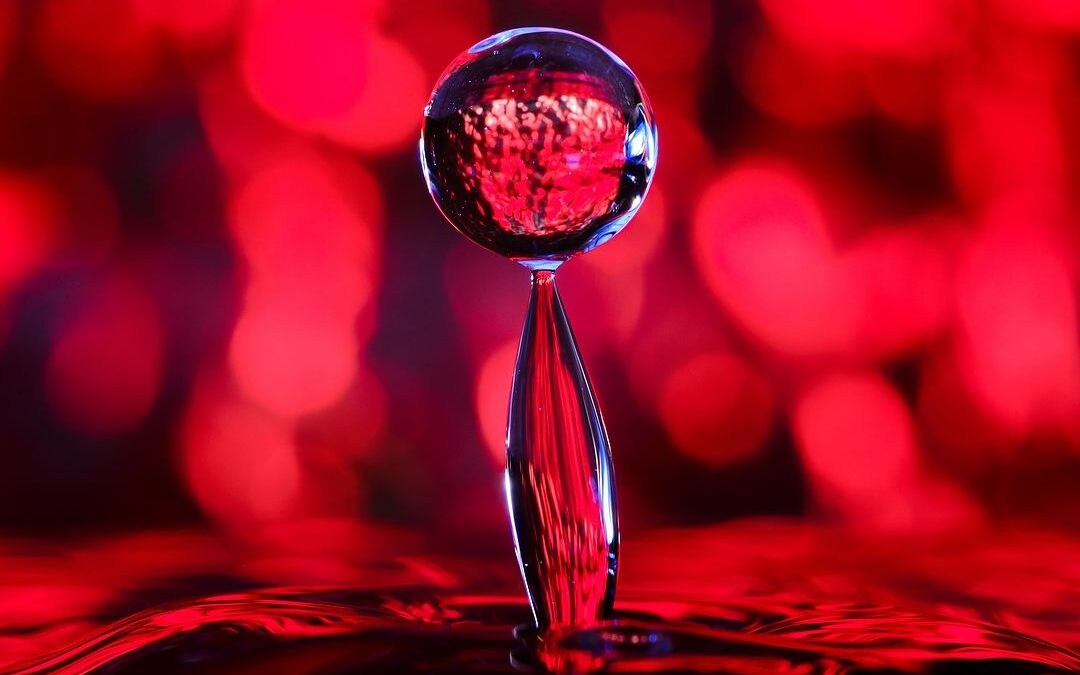I’ve always tried to be a “glass half-full” kind of person, which has been a challenge the past year. Having to cancel most of my workshops was frustrating, but it did push me to create and start teaching online classes. Not only has that turned out to be fun, but it’s resulted in some new friendships. Staying home also made me work harder at finding good photo opportunities nearby, even inside my house. And that’s been good too. It’s reminded me of the value of shooting the same thing over and over. Not surprisingly, that usually results in better pictures, as long as you’re willing to experiment.
Most photographers (myself included), tend to shoot something, and if happy with the image(s), move on to a new subject. But what if you went back and did it again? And better yet, changed things up and tried it a different way? In my experience, that often results in a better picture. Of course, that only works if the shoot is near where you live, or better yet, inside your home. Last summer I returned over and over to the same lake where green herons could be found hunting. Over time, what I learned watching them helped me make better pictures. And, it was a good excuse to get outside while being socially distant. (Here’s a story I wrote on bird photography)

After several visits to a nearby lake last summer, I learned enough about the behavior of green herons to anticipate this action. Nikon D500, Aperture Priority, Sunny white balance, ISO 2000, 1/2000 at f/5.6 in Matrix metering, -0.7 EV, Nikkor AF-S VR Nikkor 500mm f/4G ED lens with 1.4X teleconverter for 700mm.
This past winter I started playing with water droplet photography. My first attempt resulted in some nice photos, and I thought, “Great! That was fun, I’m done.” But a few days later, I thought of a different way to do it. And over the last two months, I’ve continued to try new twists, re-visiting this shoot over and over, shooting thousands of photos (thank god for digital!). I’ve used different liquids, added food dye, tried different backgrounds, added a second flash and put gels (filters) on those flashes. As much as I liked the first photos, the later ones were even better. More importantly, it gave me a reason to keep making photos, and challenging myself to experiment. I even tried a new mode with my speedlights I’d never used before. Which of course brought me back to one of the things I regularly tell people about photography: “You can always learn and improve, no matter how long you’ve been doing it or how old you are.” Here are some of the results of that continued project:
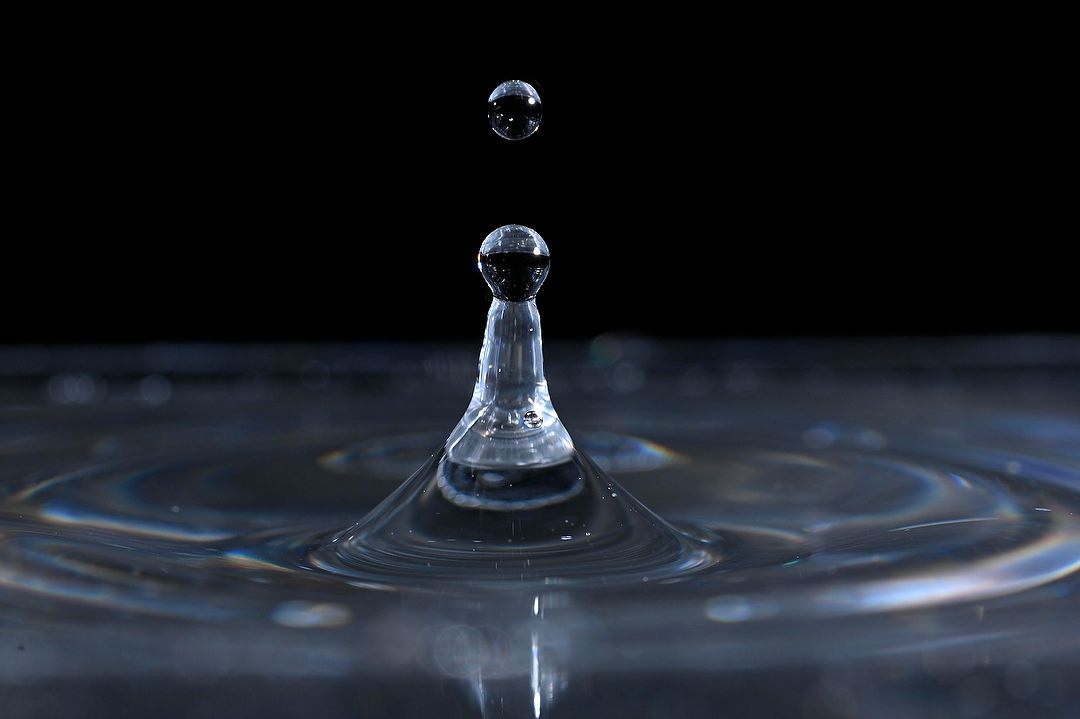
I was pretty happy with my first water droplet photos, using a single flash and black background. Nikon Z 6 II, Manual exposure, Flash white balance, ISO 500, 1/160 at f/14, AF-S VR Micro-Nikkor 105mm f/2.8G IF-ED lens.
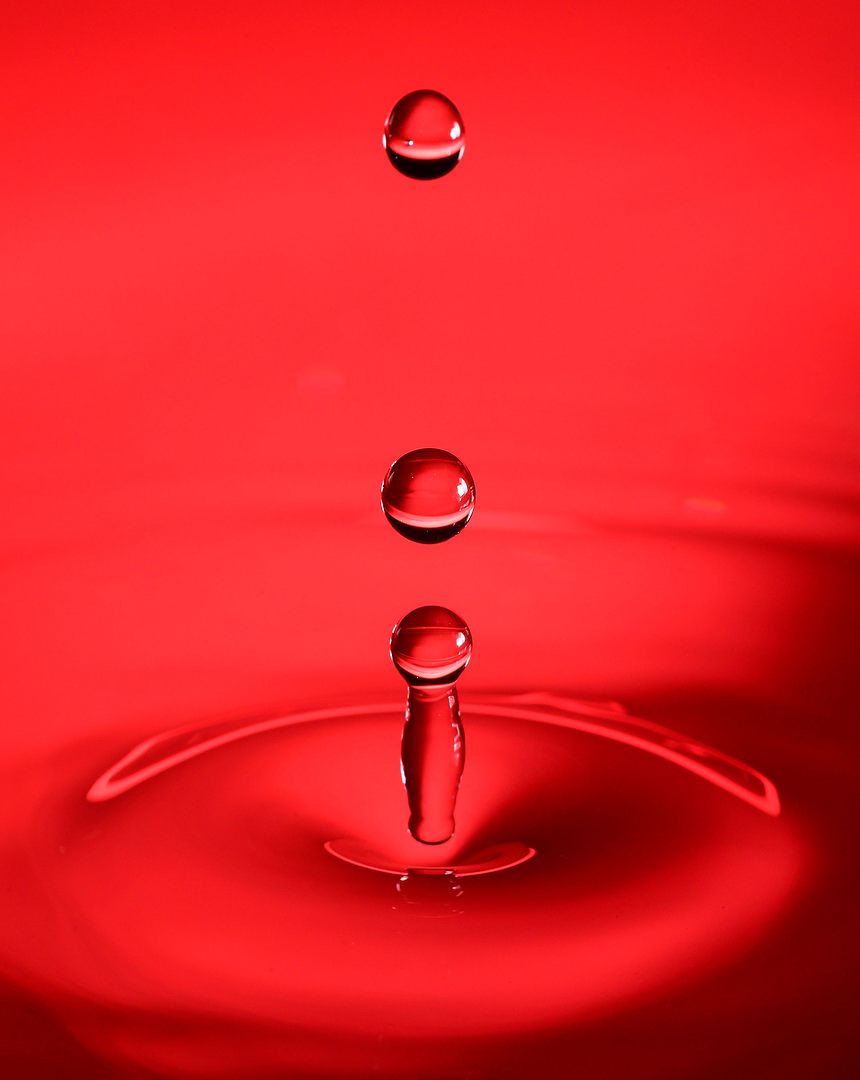
But then I decided to do it again, using a red bowl and shooting from a higher angle. That gave me an entirely different look. Nikon Z 6, Manual exposure, Flash white balance, ISO 800, 1/160 at f/22, AF-S VR Micro-Nikkor 105mm f/2.8G IF-ED lens.

After that I wanted to see if I could get closer to the drops and shoot from water level. I also tried a variety of colorful boards as backgrounds. Nikon D780, Manual exposure, Flash white balance, ISO 400, 1/200 at f/22, AF-S VR Micro-Nikkor 105mm f/2.8G IF-ED lens.
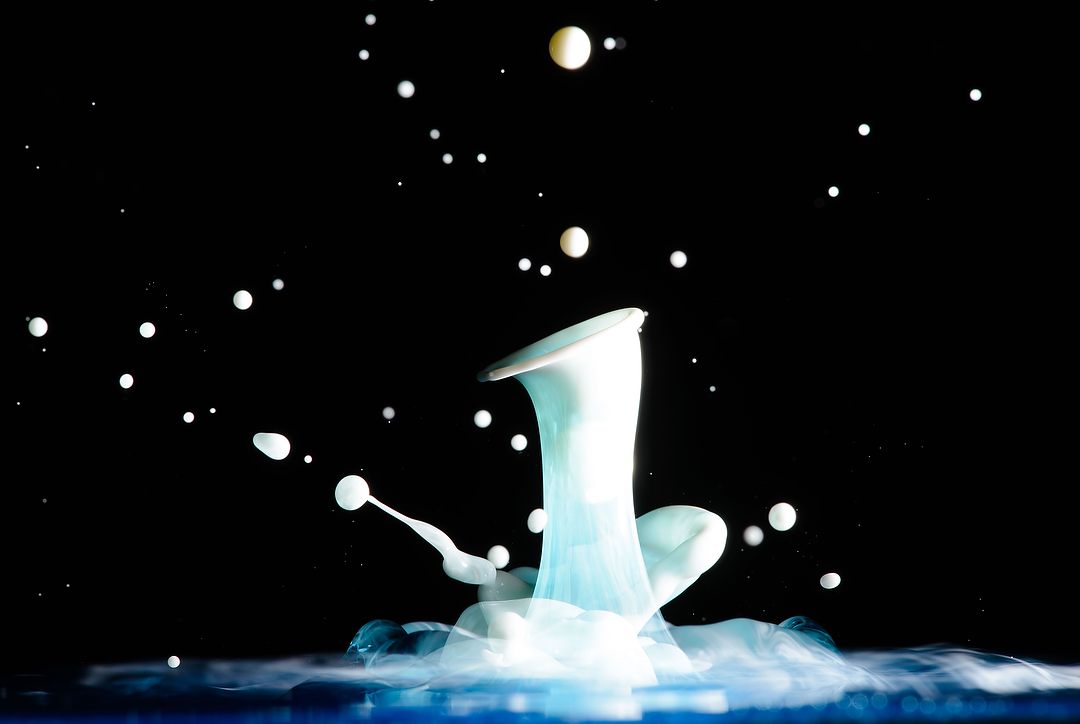
Then, I remembered that my Nikon speedlights offered a “Repeating” flash mode, which I’d never used. So I tried longer exposures (in a dim room) and had the flash fire eight times while the shutter was open. I also subsituted heavy whipping cream for water, both for the white color and the thicker consistency. Nikon D610, Manual exposure, Flash white balance, ISO 320, one-second at f/22, AF-S VR Micro-Nikkor 105mm f/2.8G IF-ED lens.
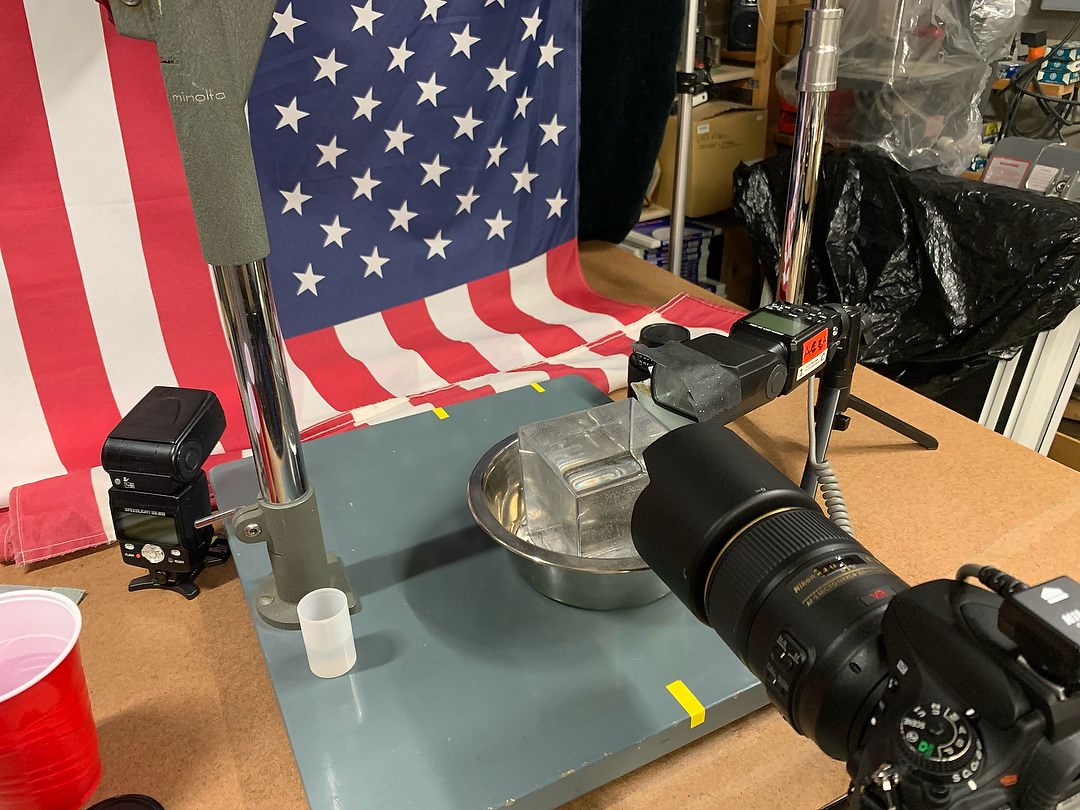
After I noticed that the droplets would often show an image of the background, I used a flag as a background and added a second flash to light it.
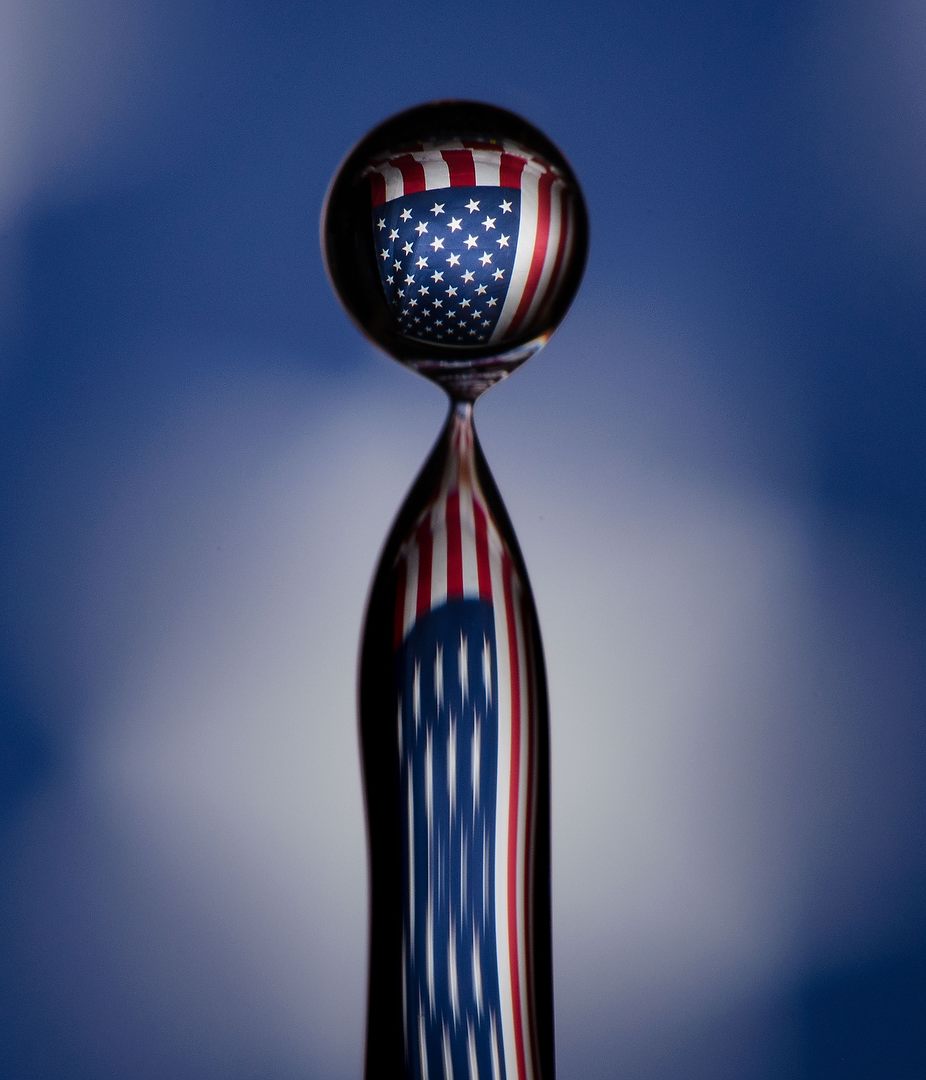
That worked pretty well, though I quickly remembered that a drop of water was like a camera lens – it would show the scene upside down. Nikon D610, Manual exposure, Flash white balance, ISO 640, 1/200 at f/22, AF-S VR Micro-Nikkor 105mm f/2.8G IF-ED lens.
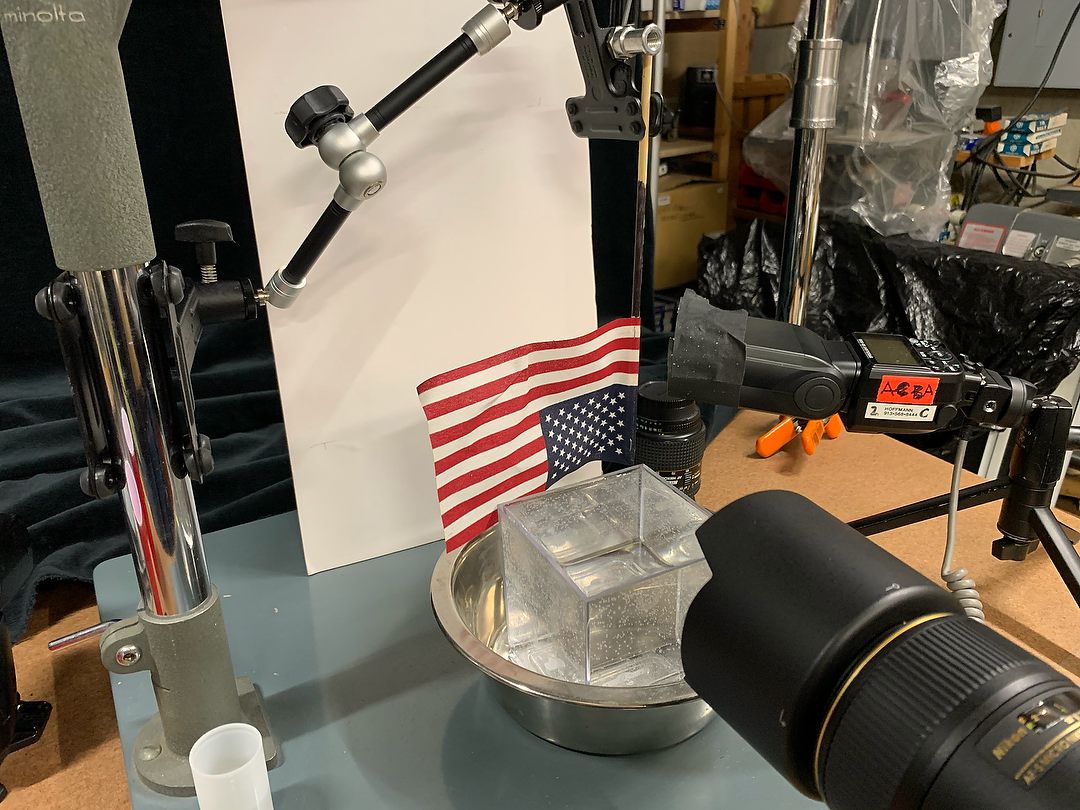
First I tried flipping the large flag, but wanted to get it closer as well, so switched to a small flag. I also found that lighting the background, instead of the flag or the droplets, resulted in a more dramatic look.
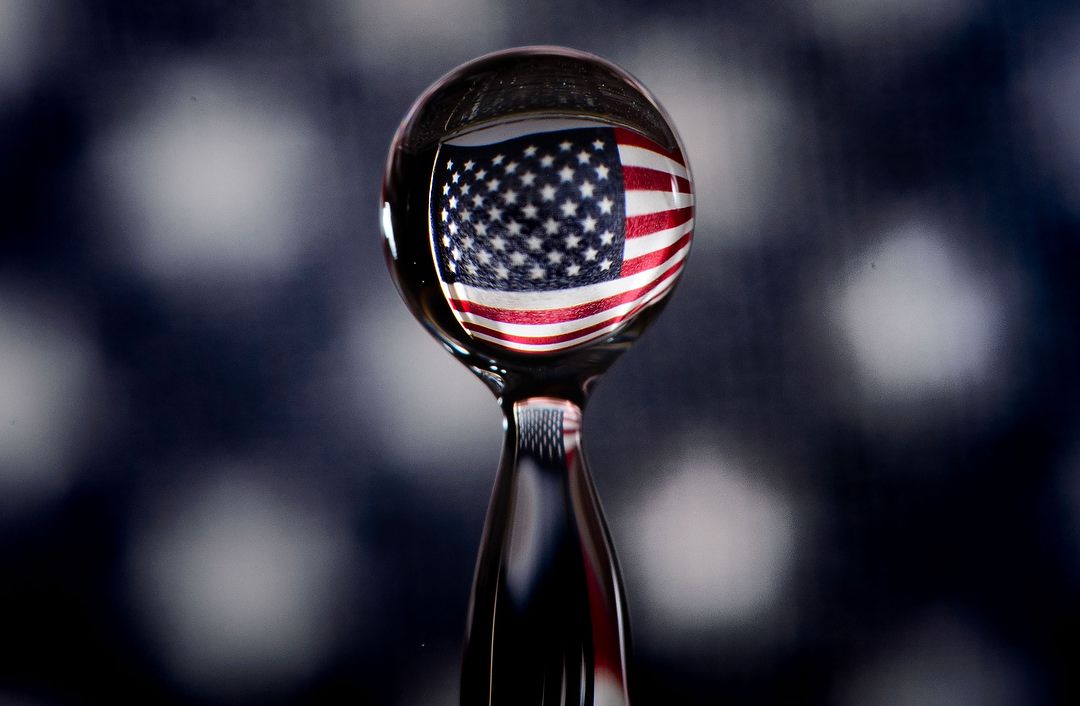
And this was the result of the last flag shoot. Nikon D610, Manual exposure Flash white balance, ISO 800, 1/200 at f/22, AF-S VR Micro-Nikkor 105mm f/2.8G IF-ED lens.
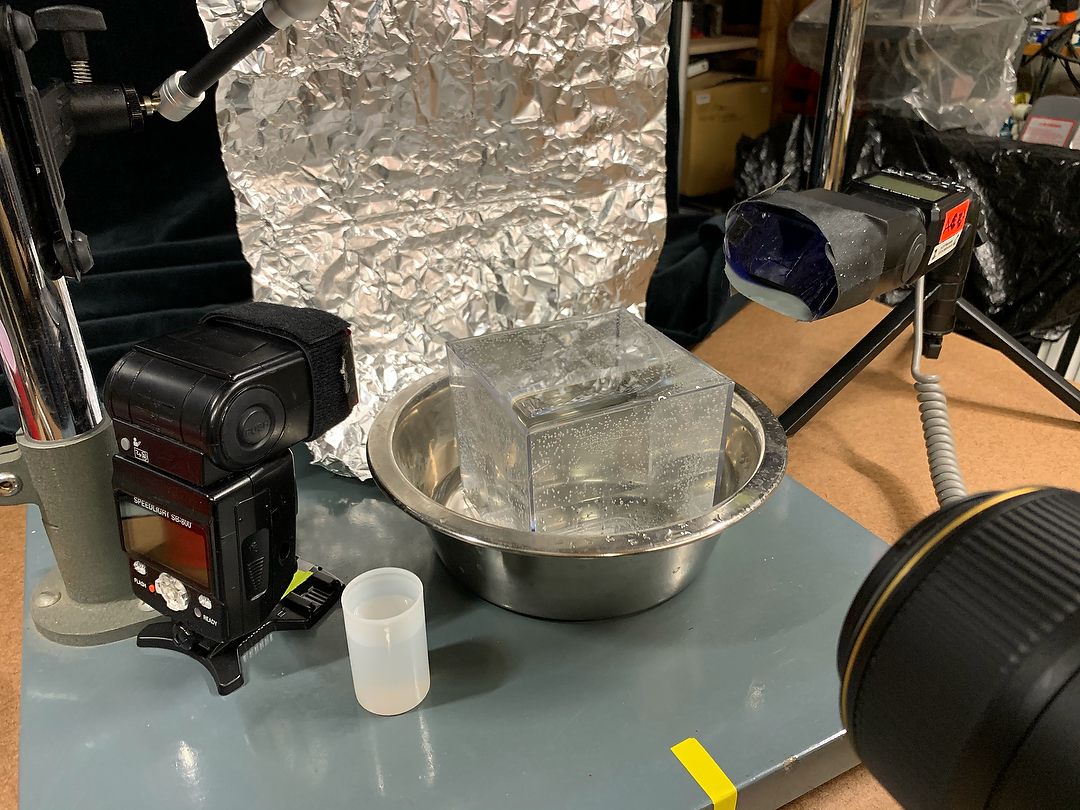
For what ended up being my final shoot, I put together a number of lessons I’d learned from the earlier ones. A low angle would let me show movement in the surface of the water. Crumpled aluminum foil, when lit by the flash from the left, would create a background with specular highlights. Adding gels to the two flashes (red for the background, blue for the water) would add color. And by this time, I understood better how to combine a small aperture with enough distance from the point of focus to achieve a small amount of depth of field.

And finally, patience. Since I didn’t want to buy an automated drip machine, it took me hundreds and hundreds of attempts to get the timing just right for a few interesting splashes. This ended up being one of my favorites. Nikon D610, Manual exposure, Flash white balance, ISO 1250, 1/200 at f/32, AF-S VR Micro-Nikkor 105mm f/2.8G IF-ED lens.
With summer fast approaching, I’ll be returning again to that lake with the green herons. On a recent visit I found a way to shoot from a new angle. And I plan to re-visit many of the other spots I discovered close to home last year as well, to see if I can make new, and perhaps better, photos than I did then. After all, I hope to be around many, many more years, which gives me lots of time to become an even better photographer. Should be fun!
(If you like this story, please share it with your friends and let them know about the links on photography that I post on my business Facebook page. I’m also on Instagram and Twitter, @reedhoffmann. And if you’re curious about the workshops I teach, you can find them here. And, you can subscribe to this blog on my home page.)

